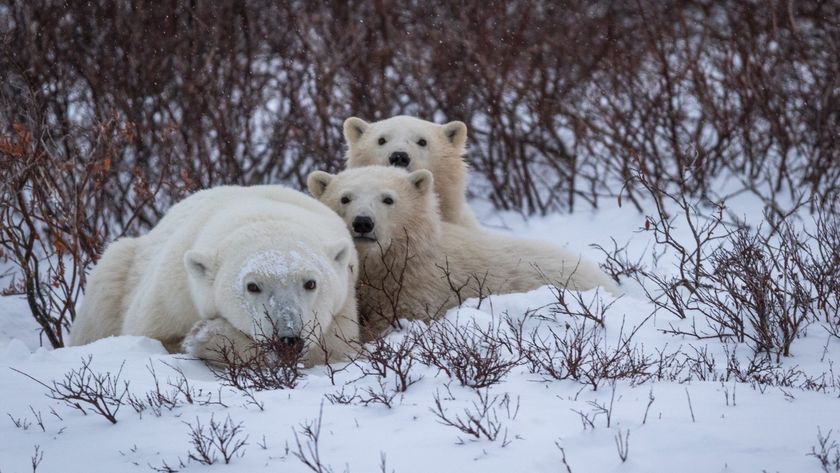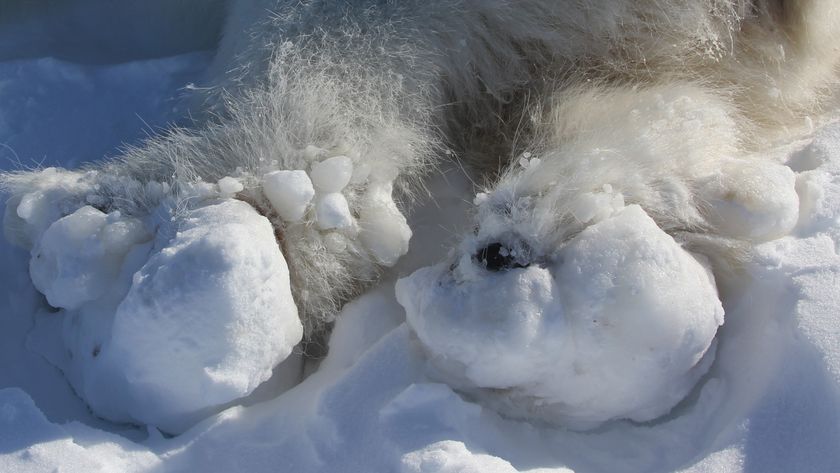
Polar Bear Monitoring More Crucial as Ice Dwindles (Op-Ed)
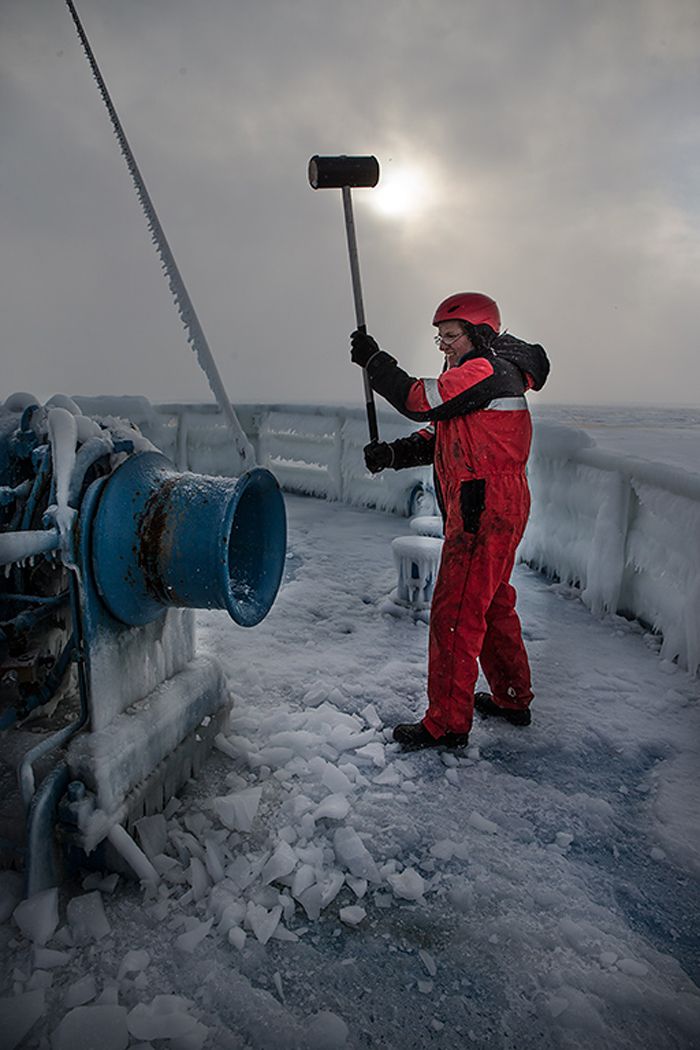
Geoff York is head of Species Conservation for WWF's Global Arctic Program. He contributed this article to Live Science's Expert Voices: Op-Ed & Insights.
There are only rolling swells on my last morning aboard this icebreaker as I enjoy breakfast at sea — a pleasant calm after a night of stormy turbulence. Over the past week, our craft has moved regularly among Svalbard's protected fjords and plowed through relatively thin ice, making for smooth sailing and easy sleeping. Once we turned south and headed out in the open Atlantic, though, it has not been so easy.
As we approach the southwestern shores of Spitsbergen, I survey the spectacular rugged mountains covered in snow and the glaciers reaching all the way to the contrasting dark ocean. Although I have enjoyed this view for the last 10 days, the scenery still takes my breath away.
I feel satisfied with the research accomplished on the voyage, but I can't help feeling a bit troubled about what we've observed. We came here in search of polar bears , expecting to encounter females with their cubs emerging from birthing dens and solitary male bears out hunting on the sea ice. Our research partners at the Norwegian Polar Institute (NPI) gathered data on 53 bears total, including seven females that are already transmitting from their new satellite collars.
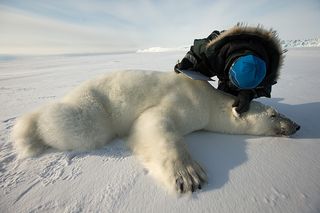
However, our team found far fewer females with cubs than expected, along with several adult bears whose bodies were in poor condition. The researchers also found a dramatic lack of sea ice. The ice they did find had formed too recently to be of much use to bears or their primary food source, seals.
When we arrived, our Norwegian colleagues informed us that the ice conditions this year were so poor we would have to change our itinerary; we would need to head north where there was better ice if we hoped to see many bears.
Only 20 years ago, during the low-ice/summer season, a ship would have struggled to navigate the coast of Svalbard because of the sea ice. Today, the west coast of Svalbard is ice-free — even in winter. Areas in northern Svalbard have also changed, with fjords remaining unfrozen. Where there is ice, it is so thin that researchers cannot work there without the risk of falling through, into the water. This doesn't bode well for polar bears, who are inextricably tied to this frozen habitat. [Polar Bears on Thin Ice, Arctic Expedition Finds]
Sign up for the Live Science daily newsletter now
Get the world’s most fascinating discoveries delivered straight to your inbox.

And the rapidly warming Arctic affects more than just polar bears. Ringed seals — polar bears' primary prey — are starting to show disturbing trends here as well. Changes in both the sea ice and in snow accumulation are harming the animals' reproductive ability, and failing to provide newborn pups with adequate protection from predators. While that may benefit bears in the short term, it will lead to long-term problems as ringed seal populations ultimately decline in number and potentially move to different locations. These same changes in the timing and extent of sea ice formation and snowfall will affect bear denning and seasonal movements, as well.
This research expedition aimed, in part, to look for polar bear denning sites and the distribution of family groups with new cubs, as early analysis of den data suggests a potential shift away from traditional denning areas. The researchers are pioneering work using geolocation ear tags that may help track movements and determine when bears go into dens. The dime-sized device records and stores a surprising amount of information on location, outside temperature and the amount of light.
Bears need to be close to sea ice when they emerge from dens so that they can hunt ringed seals found at the ice. During the last few years on southern islands, however, mothers and cubs emerged from the den in spring and found a totally open sea. The ice was already gone, and with it, most ringed seals, leaving the bears with a tough start to their new lives.
It's also become increasingly difficult for females to reach preferred denning areas. The winter-freezing period of sea ice — when the ice is at its greatest extent — has become increasingly delayed in recent years. Bears are ready to come ashore to den, but the ice edge ends up being too far away from land for the animals to make the trip. Do these females just den elsewhere, and what is their success rate? These are questions we hope NPI can answer in coming years.
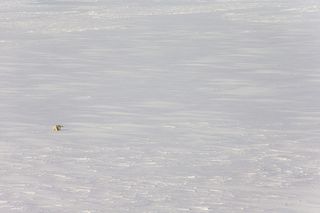
The changes could certainly have an effect on polar-bear reproduction, but we really need better long-term monitoring to learn the overall impacts on populations. Even in the past, when conditions in the Arctic were more stable, there were always good and bad years for polar bears. Our challenge as scientists is to separate the short-term variation — what we would consider natural fluctuations — from significant, long-term trends. Then we need to combine this data on long-term trends with the best available projections on climate and sea ice. This will help to predict how polar bears will respond to the expected loss of their sea ice habitat in the coming years — no easy task for scientists.
Monitoring wildlife takes time, financial investment and a lot of manpower. Studying polar bears presents even greater challenges: remote and largely inaccessible habitat for much of the year; field conditions hostile to humans and equipment; and the animals' broad, circumpolar distribution. Despite such obstacles, data gathered on this trip and in the coming year from satellites will add considerably to the understanding of polar bears in this remote Arctic area.
Author's Note: You can track the bears and learn more about the expedition at this site.
Follow all of the Expert Voices issues and debates — and become part of the discussion — on Facebook, Twitter and Google+. The views expressed are those of the author and do not necessarily reflect the views of the publisher. This version of the article was originally published on Live Science.
